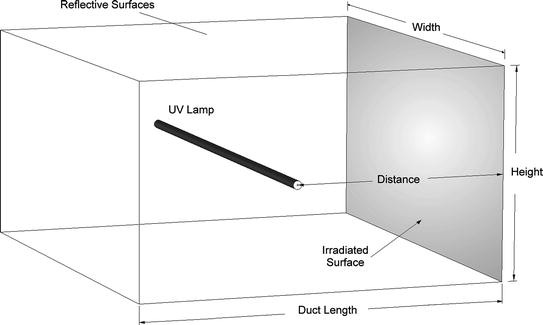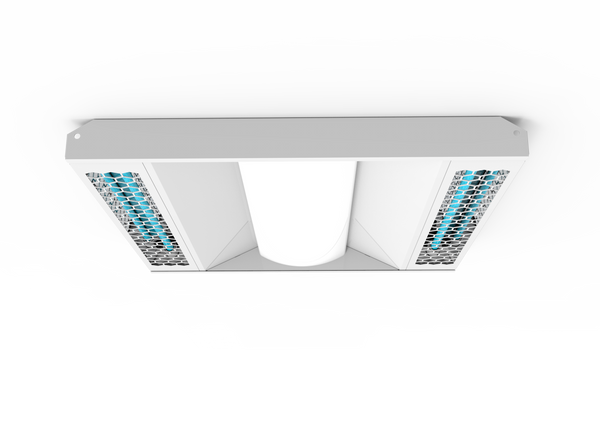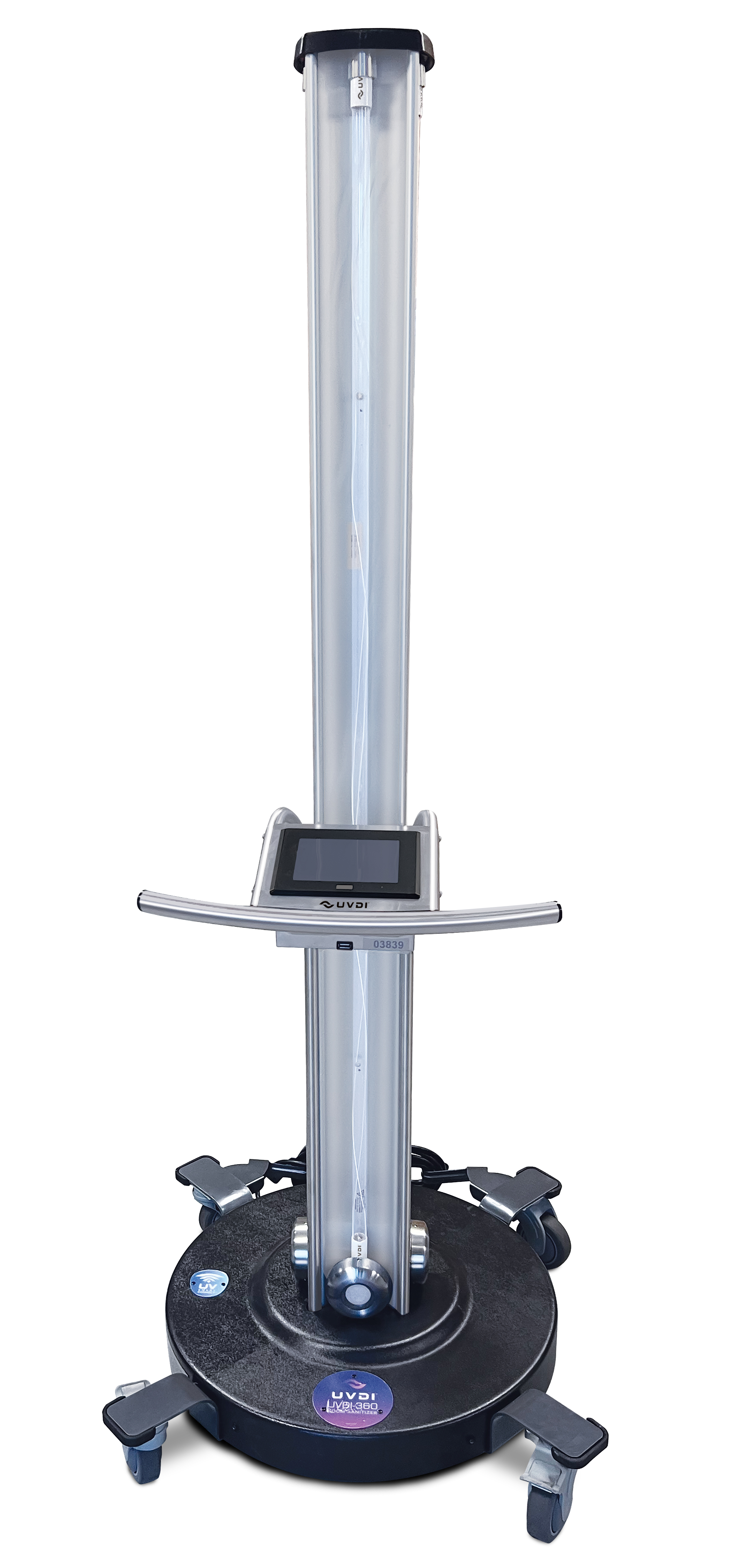Using the Possible of UV Disinfection: Shielding Health and Health
As the globe grapples with the continuous pandemic and the constant danger of infectious illness, the importance of keeping health and wellness and health has actually never been more obvious. In this context, using the capacity of UV disinfection arises as an encouraging solution. UV sanitation, a modern technology extensively used in various sectors, has actually confirmed effective in getting rid of dangerous microorganisms. There is much even more to discover behind the scientific research of UV disinfection and its applications. From understanding the systems at play to executing this innovation in our lives, this discussion intends to clarify the possibility of UV disinfection and its function in guarding our health and hygiene.
Comprehending UV Sanitation
UV sanitation is a very reliable and extensively utilized technique for guaranteeing and getting rid of dangerous microorganisms wellness and health. This strategy utilizes ultraviolet (UV) light to inactivate microorganisms by damaging their DNA and stopping them from reproducing. UV sanitation is especially efficient against bacteria, viruses, and other microbes that can create conditions and infections.
The concept behind UV sanitation is straightforward yet effective. When UV light is sent out at a details wavelength, it passes through the bacterium's cell wall and disrupts its genetic material. This procedure, called photodissociation, leads to the formation of thymine dimers, which protect against the microbe from duplicating and rendering it harmless. UV disinfection can be used in numerous settings, consisting of water therapy plants, health care centers, food handling sectors, and air filtration systems.
One of the benefits of UV disinfection is its capacity to properly and effectively remove a vast array of virus without the demand for chemicals or additives. Unlike other disinfection techniques, such as chlorine or ozone, UV sanitation does not introduce damaging by-products or chemical residues right into the setting. Additionally, UV disinfection is a non-contact process, which means that it does not call for physical contact with the bacteria, reducing the threat of cross-contamination.

The Scientific Research Behind UV Disinfection
The efficiency of UV disinfection hinges on its ability to disrupt the hereditary product of microorganisms, making them unable to replicate and consequently removing their damaging capacity. UV, or ultraviolet, radiation is a type of electromagnetic radiation with wavelengths shorter than visible light. It is categorized into three types: UV-C, uv-b, and uv-. UV-C radiation, particularly, has the fastest wavelength and the highest possible power. This high-energy UV-C radiation is most effective in disinfection applications since it can pass through the cell walls of microorganisms and damage their DNA or RNA.
When microbes are exposed to UV-C radiation, the power is absorbed by their genetic material, triggering bonds to break and forming chain reactions that disrupt their ability to replicate. This avoids the bacteria from spreading and reproducing infection. UV sanitation is specifically reliable versus microorganisms, fungis, and viruses, including common pathogens such as Escherichia coli, Salmonella, and Influenza.
The scientific research behind UV disinfection is supported by extensive study and research studies. It has been revealed that exposure to an adequate dosage of UV-C radiation can achieve a high level of disinfection, commonly going beyond 99.9% efficacy in eliminating microorganisms. However, it is very important to keep in mind that the efficiency of UV sanitation depends on various variables, including the intensity of UV-C radiation, direct exposure time, distance from the UV resource, and the vulnerability of the bacterium to UV radiation.
Applications of UV Sanitation
Given the comprehensive study and effectiveness of UV sanitation in disrupting the hereditary product of microorganisms, it is vital to explore the numerous sensible applications of this innovation. UV sanitation has actually shown to be a valuable tool in a wide variety of markets where keeping a clean and secure atmosphere is essential.
One major application of UV disinfection remains in medical care setups. UV light can be used to sanitize surface areas, tools, and even the air in healthcare facilities and clinical centers. This helps to decrease the danger of healthcare-associated infections and makes certain a more secure environment for clients and health care workers.
Another essential application is in the food and beverage market. UV sanitation is made use of to treat water and get rid of harmful microorganisms, such as E. coli and Salmonella, from the manufacturing process. uv surface disinfection. This ensures the safety and quality of the products we consume
UV disinfection is also widely used in water treatment plants and wastewater treatment centers. It is a reliable approach for damaging unsafe microorganisms, infections, and bloodsuckers that can be present in water sources. This helps to offer secure and clean drinking water to communities and protect the environment from air pollution.
In addition, UV sanitation is utilized in the pharmaceutical industry to sterilize equipment and keep the stability of products. It is also made use of in research laboratories and research study facilities to avoid contamination and ensure accurate outcomes.
Advantages of UV Sanitation Modern Technology
One noteworthy advantage of utilizing UV disinfection modern technology is its capacity to successfully eliminate microorganisms without the usage of rough chemicals. This is especially beneficial in various setups, such as health care facilities, water therapy plants, and food processing sectors, where the existence of damaging pathogens postures a considerable risk to public wellness and security.
Unlike conventional sanitation techniques that rely on chemicals like chlorine or ozone, UV sanitation technology uses ultraviolet light to target and destroy the DNA of microbes, properly neutralizing their capacity to replicate and cause infections. This procedure not only gets rid of the demand for potentially unsafe chemicals however likewise minimizes the danger of chemical residue or results remaining in the cured setting.

Additionally, UV disinfection innovation is eco-friendly. As it does not count on using chemicals, it eliminates the requirement for their manufacturing, disposal, and transport, minimizing the general carbon impact related to sanitation procedures. In addition, UV sanitation systems have a longer life-span contrasted to chemical-based techniques, leading to less regular replacement and further reducing waste.
Executing UV Disinfection in Life
To efficiently execute UV disinfection in day-to-day live, companies and individuals can incorporate portable UV sanitizing devices right into their health routines and cleaning techniques. These tools are created to discharge ultraviolet light, which has actually been shown to kill or inactivate a large range of bacteria, including fungi, infections, and germs. By utilizing mobile UV sterilizing tools, people can disinfect commonly touched things and surfaces, such as cellular phone, laptop computers, doorknobs, and keys, lowering the danger of spreading out germs and infections.
Along with incorporating mobile UV sanitizing tools, it is essential to adhere to proper standards and recommendations for efficient UV disinfection. This includes ensuring that the tool is used appropriately and for the recommended period to achieve ideal sanitation results. It is likewise important to focus on precaution, such as wearing protective eyewear and preventing straight exposure of the UV light to the skin.

In addition, companies can carry out UV disinfection technology in numerous setups to improve hygiene practices. Healthcare facilities and healthcare centers can use UV disinfection robotics to sanitize person spaces, running movie theaters, and other high-touch areas. Food handling markets can incorporate UV disinfection systems right into their production lines to boost food security and prevent contamination.
Final Thought
In conclusion, UV sanitation technology holds wonderful potential in guarding health and health. By harnessing great post to read the power of ultraviolet light, it properly eliminates dangerous microorganisms and minimizes the risk of infections. This innovation can be used in numerous setups, such as medical facilities, water therapy facilities, and public spaces, giving a secure and efficient method of sanitation. With its many advantages, UV disinfection is a valuable tool for keeping a healthy and clean setting.
Unlike other disinfection approaches, such as chlorine or ozone, UV disinfection does not present dangerous byproducts or chemical residues into the atmosphere. It is essential to keep in mind that the performance of UV disinfection depends on different elements, consisting of the intensity of UV-C radiation, exposure time, distance from the UV source, and the sensitivity of the microbe to UV radiation.
An additional benefit of UV sanitation innovation is its ability navigate to this website to offer continual and fast disinfection. Unlike manual cleansing approaches, which can be lengthy and need considerable labor, UV disinfection systems can be automated and operate continually, ensuring regular sanitation without human intervention.To efficiently execute UV disinfection in day-to-day life, organizations and people can integrate portable UV sanitizing tools right into their hygiene routines and cleansing methods.